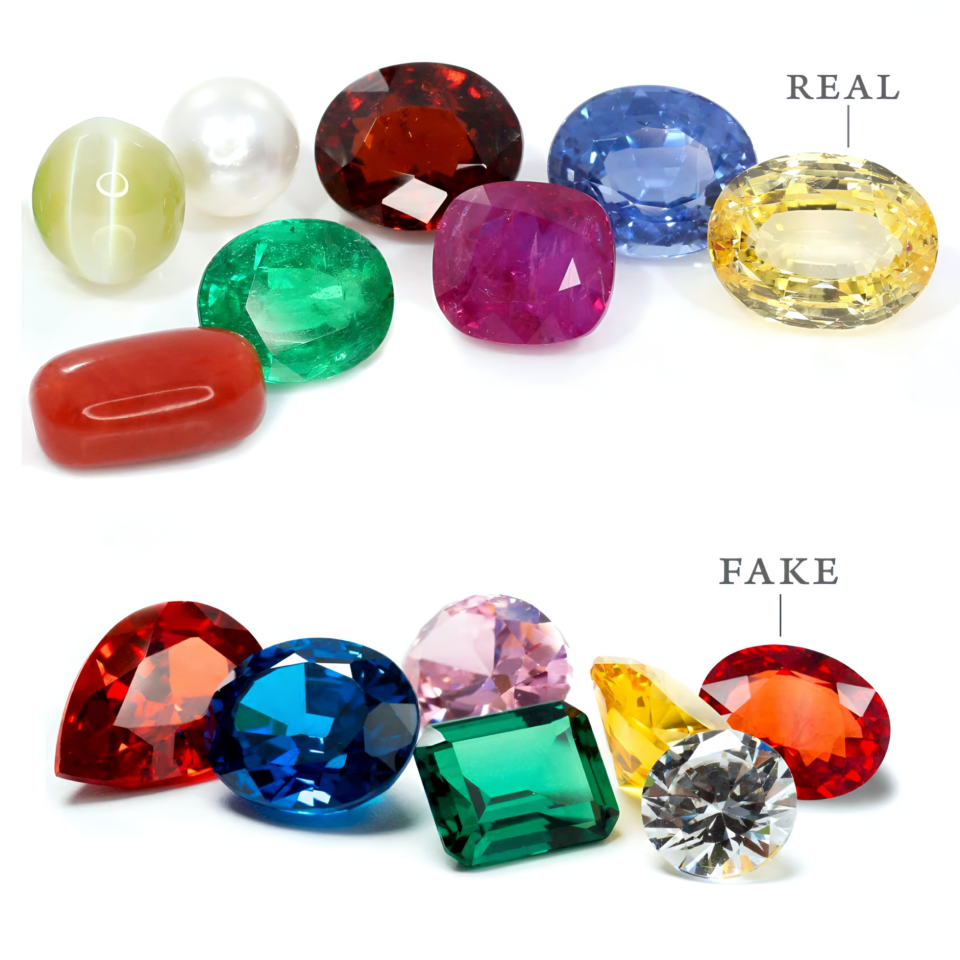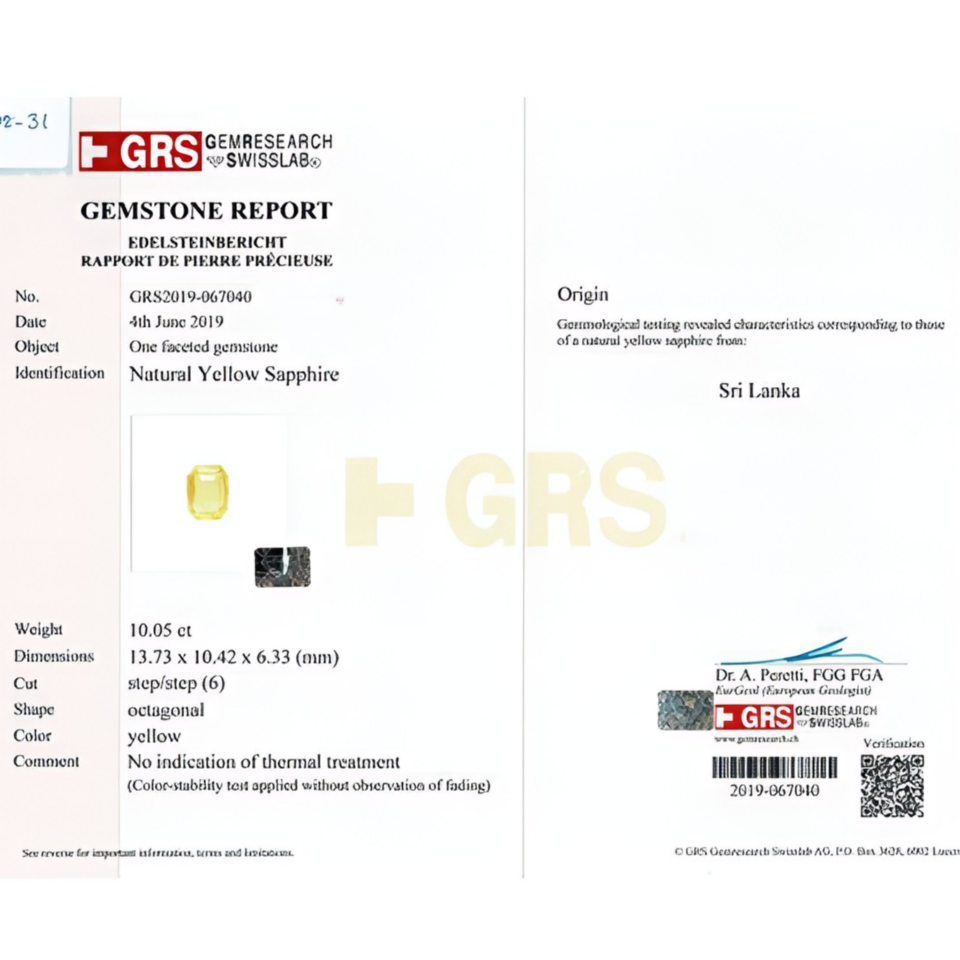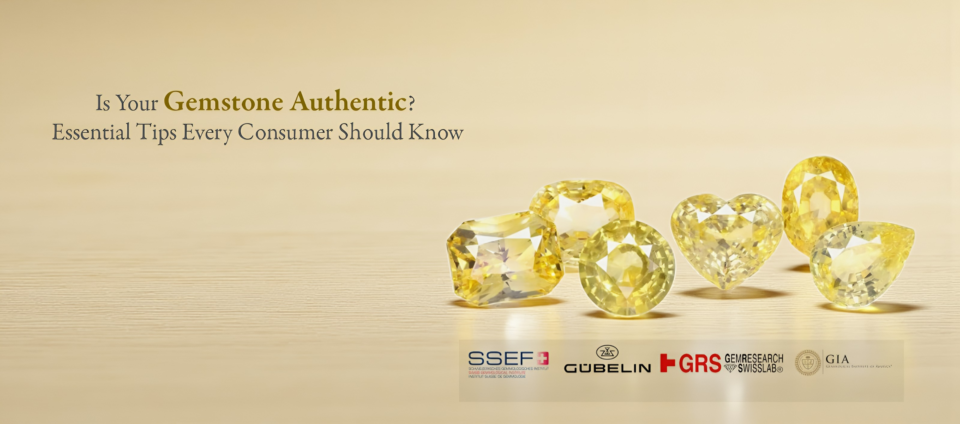Gemstones have fascinated the human mind since time immemorial- either as an aesthetic adornment, a supposed possessor of metaphysical properties, or a valuable investment. However, in the current unregulated and disseminated gemstone market, the border between original and imitation is very thin. As artificial stones keep entering the market and unethical practices are increasing, do you ever wonder whether what you are purchasing is a natural stone?
Is your Blue sapphire or emerald, even a real one or just a fake imitation?
There are six tips that can be broken down to ensure that you are sure about evaluating gemstone authenticity and prevent expensive mistakes by experts.
Know the look Alikes
Learn before you start to shop. There are quite a lot of gemstones that have visual equivalents that can easily deceive even the layman. For example:
Red Spinel can easily be mistaken with Ruby stone, yet is much cheaper.
Tanzanite stone may resemble the deep color blue of Sapphire, but it is very different in composition and price.
Knowing these look-alikes can guide you to not pay top rates on stones of lesser worth to you. This blog will help you with that:-
Conduct Visual Assessment
The color, clarity, and inclusions of a gemstone can tell much about the authenticity of that gem. Here’s what to look for:
Color: Real stones tend to vary in colour. An example is that rubies can contain touches of purple, orange, or brown, not necessarily the much-desired red of the pigeon so called. Likewise, sapphire’s colour varies between light blue and dark navy. Sri Lankan sapphires are well-known due to their saturation of colour. A gem with a proper colour, uniformly distributed and brilliant, will be very expensive.
Recognizability: Natural gemstones are usually imperfect, with inclusions or tiny spots of imperfection in them, such as feathers or needles. What seems to be a perfectly polished stone to the naked eye is in fact a synthetic or glass-filled one.
Transparency: Compare stones of the same type, side by side. This assists you in detecting inconsistencies and the rarest jewel.
Keep in mind that it is hard to be perfect in nature. When a stone appears too beautiful, it is likely to be a fake.
More to read – 6 Trendy Ways to Style Jewellery – Must Try!

Be Price-Savvy
When the price appears to be too good to be true, it probably is. The natural gemstones are scarce and more expensive because of their rarity and exclusivity.
Synthetic stones are produced in large quantities and hence are much less expensive, although they look alike.
An example is the Emerald stone (belonging to the beryl family) which are much more costly than the Aquamarine stone in spite of the fact they belong to the same mineral family. This comes as a result of the rarity and demand of emeralds.
Watch out for traders who will explain why their prices are low by saying that the stone is treated, of inferior origin, or lower grade. The tactics tend to conceal the sale of the synthetic or imitation gems. The prices should always be compared among well-established sources to know the market standards.
Know the trending prices for today’s market here – Gemstone Price Index India: Understanding What Drives the Value of Your Stone
Vet Your Seller
The experience of buying your gemstones can or can not succeed depending on the seller you use. This is the way to test credibility, check:
Reviews: Find regularly favorable feedback and testimonials.
Certifications: Trustworthy sellers will include the paperwork of known gemological institutes, like Navratan, which provides a lab certificate from renowned labs with every gem.
Return Policy: An open and just return policy is an indication of a reliable seller. Make the decision wisely when no refunds are permitted–then you have nothing to fall on in the event of the gem proving a counterfeit.
Always Request a Certificate of Authenticity
Your strongest line of defence with regard to fraud is the gemstone certificate. These documents are issued by professional gemological laboratories and they certify:
- Identity and origin
- Treatments (if any)
- Color, clarity, cut and carat weight.
The highest level of certifications is bestowed by well-known and renowned organisations such as:
- GIA (Gemological Institute of America)
- IGI (International Gemological Institute)
- Gübelin
In the case of lower-value stones, local laboratories can be used. But when it comes to making high-value purchases, demand internationally recognised certification.
Also Read – How To Verify Your Gemological Report?

Consult an Expert
In case of uncertainty, consult a gemologist. A set of specially trained professionals will employ special equipment, such as microscopes, loupes, and refractometers, to study the internal structure, refractive index and inclusions of a stone.
A gemologist can:
- Confirm authenticity
- Determine improvements or treatment.
- Determine origin and value
When it comes to rare or expensive gems, they have great experience that can be applied. A quick consultation will help you avoid an expensive error.
Final Thoughts
The purchase of a gemstone is not a casino game; it should be a happy one. You will be able to manoeuvre the market effectively and clearly with the right knowledge and tools. Be it spending on an everlasting ruby or choosing a sapphire based on its astrological value, the tips mentioned above will enable you to make wise, genuine decisions.
Next time you are attracted to a glittering necklace, stop and wonder Is it what it says it is? By a little work, you will see that your gemstone is not only pretty–but really worth money.
Looking forward to adding a gorgeous gemstone jewellery piece to your collection? Visit Navratan, the online gem bazaar now.

